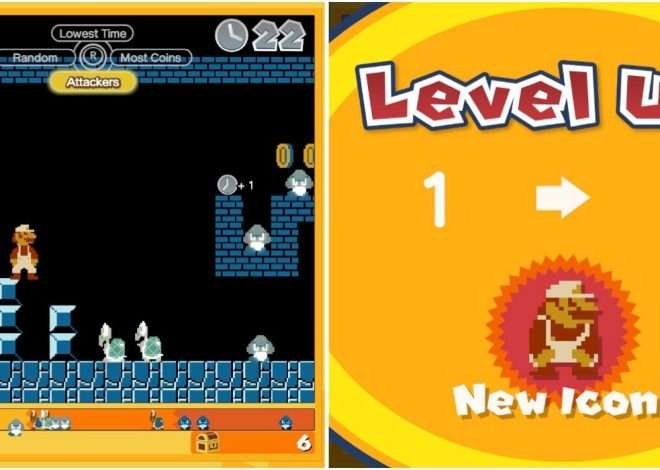
Xbox’s Cloud Gaming Strategy: Learning from Stadia’s Mistakes
The gaming world witnessed the rise and fall of Google Stadia, a bold foray into cloud gaming that ultimately fell short of expectations․ Many factors contributed to its demise, from a lack of compelling exclusive titles to a confusing pricing model․ However, Microsoft’s Xbox is now entering the fray with a cloud gaming publisher, presenting a potentially different approach․ This article delves into the reasons why Xbox’s strategy might just be the recipe for success where Stadia failed, offering a compelling alternative for gamers worldwide․ We will explore the key differences and potential advantages․
The Stadia Stumble: Lessons Learned
Google Stadia’s failure wasn’t a simple case of a bad product․ It was a confluence of missteps․ The initial marketing promised a revolutionary experience, but the reality fell short․ The lack of compelling exclusive games, a crucial element for any successful gaming platform, was a significant drawback․ Many gamers felt there wasn’t enough incentive to switch from established platforms like PlayStation or Xbox․ The subscription model, while seemingly affordable, lacked clarity and often left users feeling they weren’t getting their money’s worth․ Furthermore, the reliance on a high-speed internet connection proved a significant barrier for many potential users․
Stadia’s Technical Hurdles
Beyond the marketing and game library, Stadia faced technical challenges․ Latency issues, a common problem in cloud gaming, plagued the platform, resulting in frustrating gameplay experiences․ These technical difficulties, coupled with a lack of significant improvements over time, eroded user confidence and contributed to the platform’s eventual shutdown․ The limited availability of supported devices also restricted access for many gamers․
Xbox’s Calculated Approach: A Different Game Plan
Xbox’s approach to cloud gaming differs significantly from Stadia’s․ Instead of launching a standalone service, they’re integrating cloud gaming into their existing Xbox ecosystem․ This allows them to leverage the established brand loyalty and extensive game library of Xbox Game Pass, a subscription service already boasting millions of subscribers․ By building upon existing infrastructure and a loyal user base, Xbox aims to avoid the pitfalls that plagued Stadia․
Leveraging the Xbox Ecosystem
The integration with Xbox Game Pass is a crucial element of Xbox’s strategy․ It provides a seamless transition for existing users and offers a compelling value proposition for new subscribers․ Instead of requiring a separate purchase for cloud gaming, it’s included within the existing subscription․ This reduces the barrier to entry and increases accessibility․ Furthermore, Xbox’s focus on acquiring studios and creating exclusive titles strengthens their cloud gaming offering by providing compelling content that keeps players engaged․
Key Advantages of Xbox’s Cloud Gaming Strategy
- Existing User Base: Xbox already possesses a vast and loyal user base, providing a ready-made audience for their cloud gaming service․
- Strong Game Library: Xbox Game Pass offers a diverse and constantly expanding library of games, providing ample content for cloud gamers․
- Seamless Integration: The integration with the existing Xbox ecosystem makes the transition to cloud gaming smooth and intuitive for users․
- Focus on Exclusive Titles: Xbox’s investment in game studios ensures a steady stream of exclusive titles, providing a unique selling point․
- Continuous Improvement: Microsoft has a proven track record of continuous improvement and innovation, suggesting a commitment to addressing any technical challenges․
Addressing Stadia’s Shortcomings
By focusing on these key areas, Xbox is directly addressing the shortcomings of Stadia․ The lack of a compelling game library, a significant problem for Stadia, is largely mitigated by Xbox Game Pass․ The seamless integration prevents the confusion and friction associated with a standalone service․ The focus on exclusive titles ensures a unique and attractive offering for gamers․ The existing infrastructure reduces the financial risk and allows for a more sustainable approach․
The Importance of Game Selection and Exclusives
The availability of high-quality, exclusive games is paramount for the success of any gaming platform․ Stadia’s failure to secure compelling exclusive titles was a major contributing factor to its downfall․ Xbox, however, is actively investing in game studios and developing exclusive titles, ensuring a constant stream of fresh content for its cloud gaming service․ This strategic move is crucial in attracting and retaining users, creating a compelling reason to choose Xbox’s offering over competitors․
Technical Infrastructure and Performance
Technical performance is another critical factor․ Stadia suffered from latency issues and other technical glitches, leading to a frustrating user experience․ Xbox is investing heavily in its cloud infrastructure to ensure a smooth and responsive gaming experience․ They are employing advanced technologies to minimize latency and optimize performance, addressing a major weakness of previous cloud gaming attempts․ This commitment to technological excellence is vital for attracting and retaining users․
Marketing and Accessibility
Effective marketing and accessibility are crucial for reaching a wide audience․ Stadia’s marketing was arguably confusing and didn’t clearly communicate the value proposition to potential users․ Xbox, with its established brand recognition and marketing prowess, is better positioned to reach a wider audience and effectively communicate the benefits of its cloud gaming service․ They are also focusing on accessibility, ensuring compatibility with a wider range of devices․
The Future of Xbox Cloud Gaming
The future of Xbox’s cloud gaming publisher looks promising․ By leveraging its existing infrastructure, strong game library, and commitment to innovation, Xbox is well-positioned to succeed where Stadia failed․ The focus on exclusive titles, continuous improvement, and effective marketing gives them a significant advantage․ The integration with Xbox Game Pass lowers the barrier to entry and makes the service more accessible to a wider audience․ Their calculated approach suggests a more sustainable and long-term vision for cloud gaming․
Addressing Potential Challenges
While the outlook is positive, Xbox still faces challenges․ Maintaining a high level of performance and minimizing latency across diverse internet connections remains a technical hurdle․ The competition in the cloud gaming market is increasing, with other established players vying for market share․ Continuous innovation and adaptation are crucial for maintaining a competitive edge․ Keeping the subscription model attractive and relevant is also paramount to long-term success․
- Maintaining Performance: Consistent high-performance is crucial to retain users․
- Competition: The cloud gaming market is competitive; continuous innovation is essential․
- Subscription Value: Offering strong value for the subscription price is key to long-term success․
- Content Updates: A steady stream of new and exciting content is essential to keep users engaged․
- Global Expansion: Expanding access to global markets will be essential for growth․



